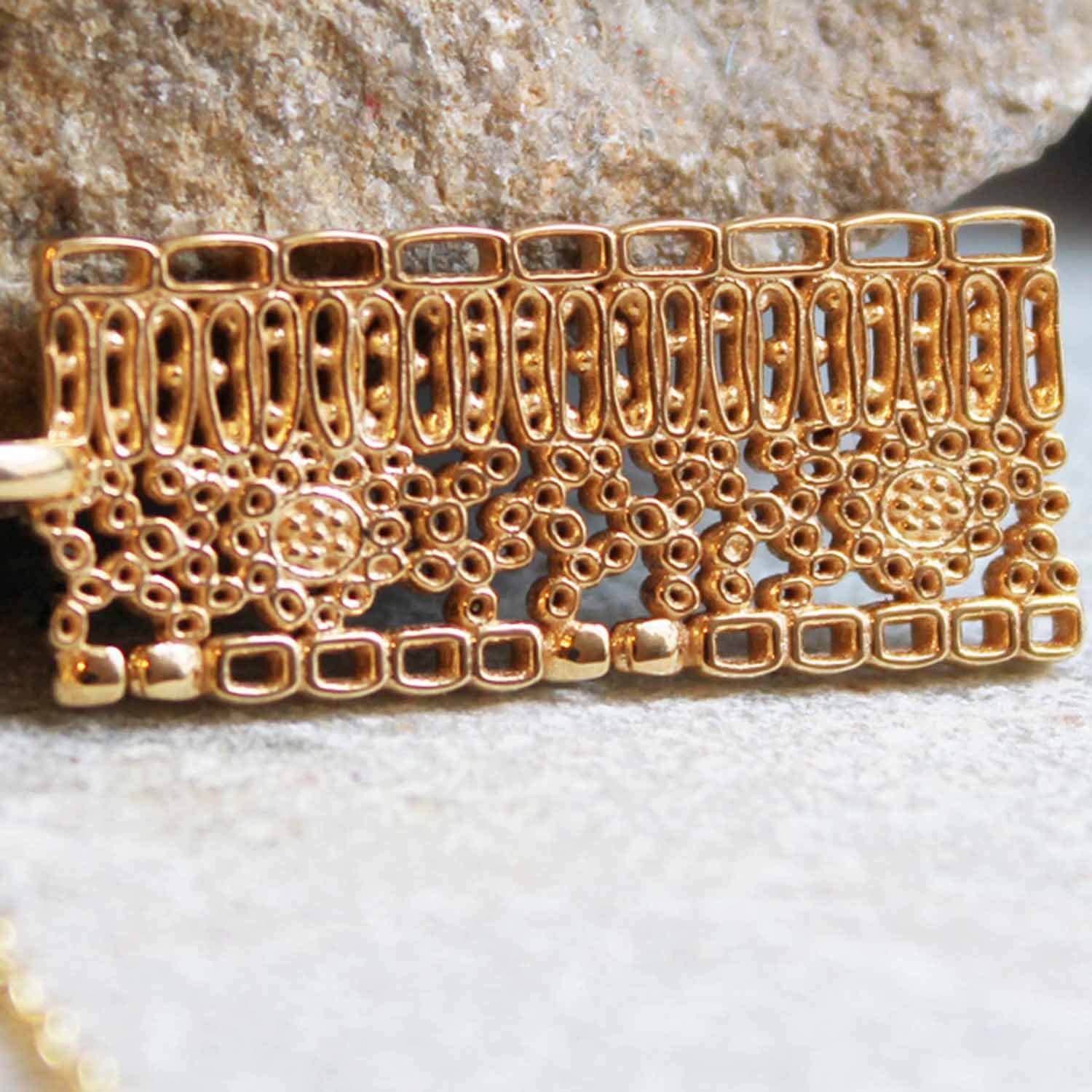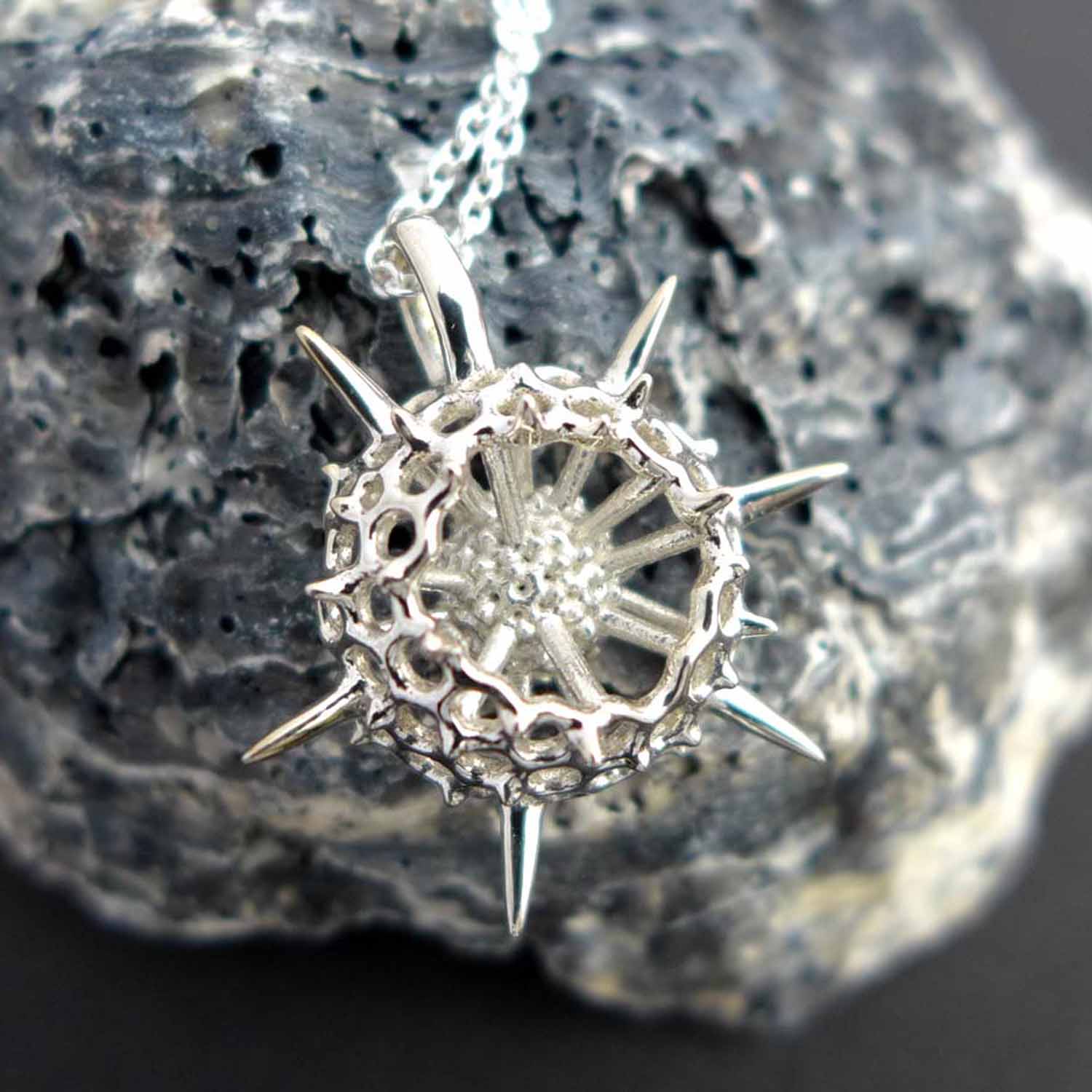Paleolithic Figurative Art as Jewelry
I'm a total fan girl of stone age artists. It enchants me that even in 40,000 BCE, humans placed importance on activities besides hunting, eating, staying warm, reproducing, and fending off cave lions. They found time to make art. Fascinating, mystical art. Since there's no gallery catalog to guide us, the meaning of their art is open to interpretation, but that only makes it more intriguing.
A trip to the Lascaux caves in France propelled me to recreate cave paintings as three-dimensional jewelry (the Lascaux Bull necklace, the Lascaux Horse necklace and the Lascaux Reindeer necklace.) Recently, I took a dive into stone age figurative art and designed two new pendants inspired by the Venus of Willendorf and the Lion-Man.
Venus of Willendorf Pendant (Venus von Willendorf)
 Radiating feminine energy, Venus figurines are a recurring motif in paleolithic art and feature rounded female bodies with exaggerated breasts, hips, and thighs. Some sculptures have intricate hairstyles like the Venus of Willendorf’s cornrow braids, and most have small heads and no facial features. Their cultural purpose is unknown, but they could have been religious objects, fertility symbols or artistic self-portraits.
Radiating feminine energy, Venus figurines are a recurring motif in paleolithic art and feature rounded female bodies with exaggerated breasts, hips, and thighs. Some sculptures have intricate hairstyles like the Venus of Willendorf’s cornrow braids, and most have small heads and no facial features. Their cultural purpose is unknown, but they could have been religious objects, fertility symbols or artistic self-portraits.
 The Venus of Willendorf was discovered in 1908 by a construction worker during excavations near the village of Willendorf, Austria. She was made of limestone probably dug from the area around Brno in the Czech Republic. The limestone figurine is painted with red ochre and stands 11 cm (4.3 in) tall. Based on stratigraphic analysis of the rock where she was discovered, her age is estimated at 29,500 years BCE. She is now on display at the Natural History Museum of Vienna (@nhmwien).
The Venus of Willendorf was discovered in 1908 by a construction worker during excavations near the village of Willendorf, Austria. She was made of limestone probably dug from the area around Brno in the Czech Republic. The limestone figurine is painted with red ochre and stands 11 cm (4.3 in) tall. Based on stratigraphic analysis of the rock where she was discovered, her age is estimated at 29,500 years BCE. She is now on display at the Natural History Museum of Vienna (@nhmwien).
In 2018, Facebook censored a photo of the Venus of Willendorf, calling it “dangerously pornographic.” They realized their mistake shortly thereafter, apologized and reinstated the photo.
Lion-Man Pendant (Löwenmensch)
 The Lion-Man sculpture was first discovered in the cave Hohlenstein-Stadel in Germany immediately before the beginning of World War II. To prevent loss of this incredible find during the war, the excavation trench was back-filled. Archaeologists didn't return to it until the 1960s, collecting over 200 shattered pieces of mammoth ivory that was painstakingly reassembled by Elisabeth Schmid to form the Lion-Man. He can be viewed at the Museum of Ulm.
The Lion-Man sculpture was first discovered in the cave Hohlenstein-Stadel in Germany immediately before the beginning of World War II. To prevent loss of this incredible find during the war, the excavation trench was back-filled. Archaeologists didn't return to it until the 1960s, collecting over 200 shattered pieces of mammoth ivory that was painstakingly reassembled by Elisabeth Schmid to form the Lion-Man. He can be viewed at the Museum of Ulm.
 The Lion-Man figurine dates to approximately 40,000 BCE making it the oldest example of figurative art. It is also the oldest known sculpture resembling an animal. In the cache where it was found, other objects including jewelry, beads and animal teeth with holes drilled into them were also discovered. The figurine stands 31 cm (about one foot) tall so it probably wasn’t jewelry itself but could have been a ritual object.
The Lion-Man figurine dates to approximately 40,000 BCE making it the oldest example of figurative art. It is also the oldest known sculpture resembling an animal. In the cache where it was found, other objects including jewelry, beads and animal teeth with holes drilled into them were also discovered. The figurine stands 31 cm (about one foot) tall so it probably wasn’t jewelry itself but could have been a ritual object.
The people who carved this figurine and the Venus of Willendorf figurine were the Aurignacians, Homo sapiens who migrated from Africa to Europe and became the first modern humans (i.e., humans that looked more like us and less like the Neanderthals) on the European continent. The lion motif was probably an interpretation of the European cave lion, Panthera spelaea, which went extinct 13,000 years ago but would have roamed Europe at the time of the Aurignacians. The Aurignacians were prolific tool builders and artists. In addition to the Venus of Willendorf and the Lion-Man, they are credited with other figurines including the Venus of Hohle Fels and the Venus of Galgenberg as well as cave paintings throughout France, Spain and Italy.
Go out and be creative. You'll be honoring your stone-age ancestors.






Leave a comment